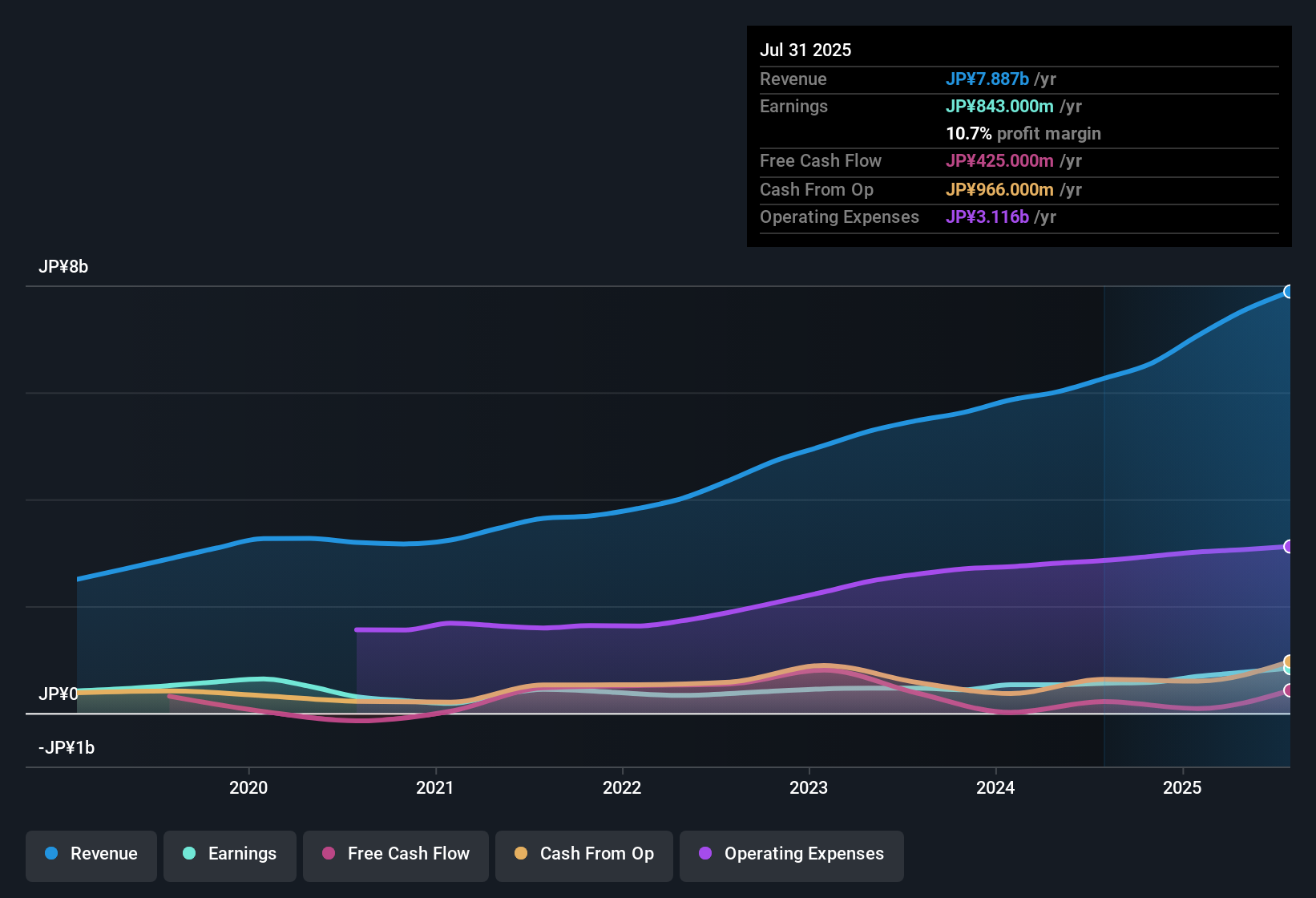- Japan
- /
- Interactive Media and Services
- /
- TSE:6184
Kamakura Shinsho (TSE:6184) Posted Healthy Earnings But There Are Some Other Factors To Be Aware Of
Kamakura Shinsho, Ltd. (TSE:6184) announced strong profits, but the stock was stagnant. Our analysis suggests that shareholders have noticed something concerning in the numbers.

Examining Cashflow Against Kamakura Shinsho's Earnings
As finance nerds would already know, the accrual ratio from cashflow is a key measure for assessing how well a company's free cash flow (FCF) matches its profit. To get the accrual ratio we first subtract FCF from profit for a period, and then divide that number by the average operating assets for the period. This ratio tells us how much of a company's profit is not backed by free cashflow.
As a result, a negative accrual ratio is a positive for the company, and a positive accrual ratio is a negative. While it's not a problem to have a positive accrual ratio, indicating a certain level of non-cash profits, a high accrual ratio is arguably a bad thing, because it indicates paper profits are not matched by cash flow. Notably, there is some academic evidence that suggests that a high accrual ratio is a bad sign for near-term profits, generally speaking.
For the year to July 2025, Kamakura Shinsho had an accrual ratio of 0.25. Therefore, we know that it's free cashflow was significantly lower than its statutory profit, which is hardly a good thing. In fact, it had free cash flow of JP¥425m in the last year, which was a lot less than its statutory profit of JP¥843.0m. We note, however, that Kamakura Shinsho grew its free cash flow over the last year. However, that's not all there is to consider. The accrual ratio is reflecting the impact of unusual items on statutory profit, at least in part.
Check out our latest analysis for Kamakura Shinsho
Note: we always recommend investors check balance sheet strength. Click here to be taken to our balance sheet analysis of Kamakura Shinsho.
How Do Unusual Items Influence Profit?
Given the accrual ratio, it's not overly surprising that Kamakura Shinsho's profit was boosted by unusual items worth JP¥82m in the last twelve months. We can't deny that higher profits generally leave us optimistic, but we'd prefer it if the profit were to be sustainable. We ran the numbers on most publicly listed companies worldwide, and it's very common for unusual items to be once-off in nature. And, after all, that's exactly what the accounting terminology implies. Assuming those unusual items don't show up again in the current year, we'd thus expect profit to be weaker next year (in the absence of business growth, that is).
Our Take On Kamakura Shinsho's Profit Performance
Kamakura Shinsho had a weak accrual ratio, but its profit did receive a boost from unusual items. Considering all this we'd argue Kamakura Shinsho's profits probably give an overly generous impression of its sustainable level of profitability. So if you'd like to dive deeper into this stock, it's crucial to consider any risks it's facing. To that end, you should learn about the 2 warning signs we've spotted with Kamakura Shinsho (including 1 which is a bit unpleasant).
Our examination of Kamakura Shinsho has focussed on certain factors that can make its earnings look better than they are. And, on that basis, we are somewhat skeptical. But there are plenty of other ways to inform your opinion of a company. For example, many people consider a high return on equity as an indication of favorable business economics, while others like to 'follow the money' and search out stocks that insiders are buying. So you may wish to see this free collection of companies boasting high return on equity, or this list of stocks with high insider ownership.
Valuation is complex, but we're here to simplify it.
Discover if Kamakura Shinsho might be undervalued or overvalued with our detailed analysis, featuring fair value estimates, potential risks, dividends, insider trades, and its financial condition.
Access Free AnalysisHave feedback on this article? Concerned about the content? Get in touch with us directly. Alternatively, email editorial-team (at) simplywallst.com.
This article by Simply Wall St is general in nature. We provide commentary based on historical data and analyst forecasts only using an unbiased methodology and our articles are not intended to be financial advice. It does not constitute a recommendation to buy or sell any stock, and does not take account of your objectives, or your financial situation. We aim to bring you long-term focused analysis driven by fundamental data. Note that our analysis may not factor in the latest price-sensitive company announcements or qualitative material. Simply Wall St has no position in any stocks mentioned.
About TSE:6184
Kamakura Shinsho
Operates a portal site that provides information services related to end of life in Japan.
Solid track record with excellent balance sheet.
Market Insights
Community Narratives



